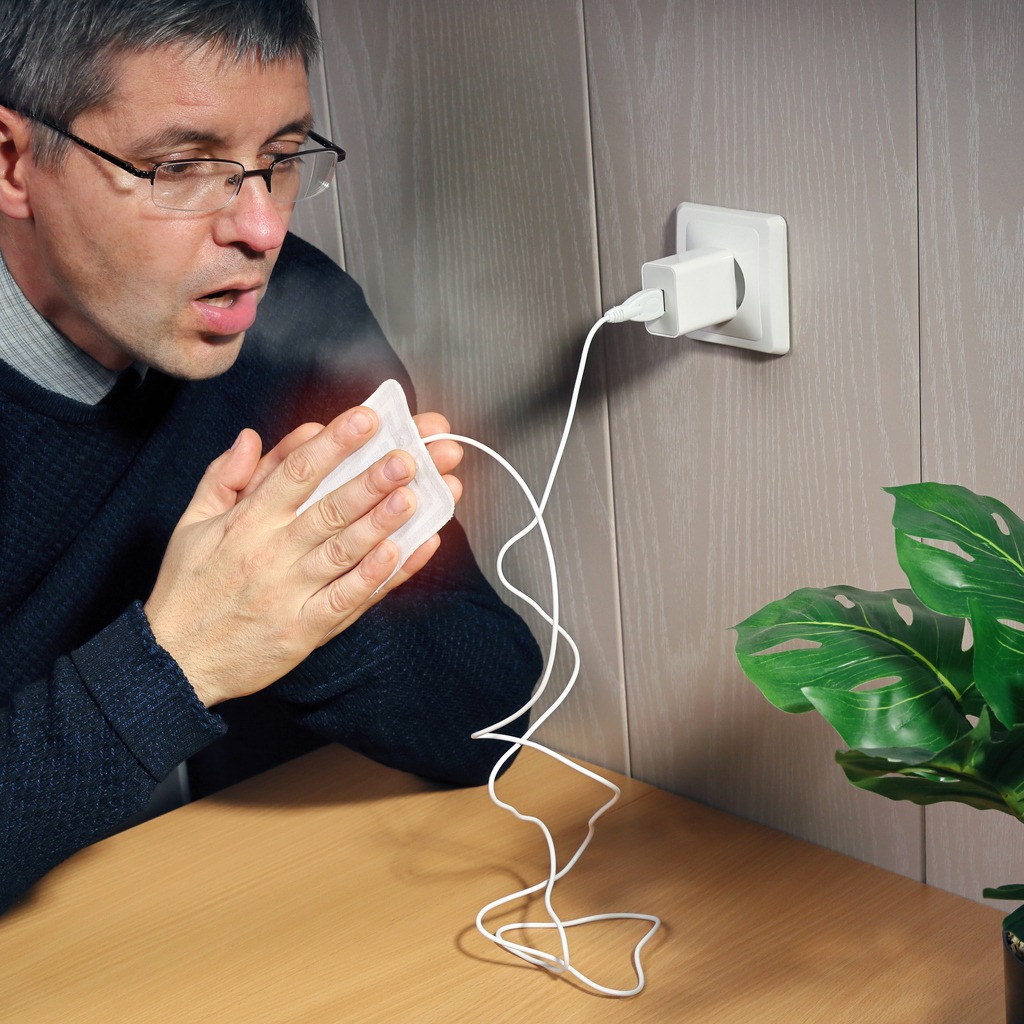It can be painful to have cold hands, and it is harder to warm them back up if they do if there is no ambient heat present, as is the case during a power outage caused by a disaster. Even when performing chores that might provide warmth, cold hands will restrict movement and dexterity and make them more difficult.
There are numerous methods for keeping hands warm. Handwarmers are included in one of these. These can be hairy, chemical, reusable, or disposable. Which hand warmer is going to be the most effective depends on the circumstances and the persons involved.
What is a Hand Warmer?
To keep hands warm in chilly conditions, hand warmers are small packets that are typically held in the hand. They provide soothing heat to joints and muscles that are in pain. They are mostly used for outdoor activities like camping, as a medical aid in extremely cold climates, and for keeping feet dry inclement weather.
What are the Different Types of Hand Warmers?
1. Battery-Powered Hand Warmers
Although the real chemistry behind battery-powered hand warmers is undoubtedly more complex, they are functionally quite simple. In them, an electrically resistive heating element aboard is powered by a rechargeable battery, which then transforms that energy into heat.
On conventional devices, the heat output is constant. The user can choose the amount of heat the device emits on more complicated ones. Once the battery is depleted, all you have to do to recharge it for later usage is plug it in. According to the intensity of heat production, these sorts of warmers typically have a working life of around 6 hours per charge. But they are possibly the most cost-effective after-purchase and ecologically beneficial when it comes to usage.
2. Air-Activated Hand Warmers
The disposable air-activated hand warmers are probably the most popular and intriguing hand warmers available. In the coldest regions of the world, you typically see these while standing in the grocery store checkout line. Despite how commonplace they appear, the chemical processes through which they work make them rather fascinating. As you can see, there are 4 ingredients in these tiny packets of warmth that are just ready to be released. Iron powder, salt chloride, activated charcoal, and a substance called vermiculite. Air or oxygen is the only additional component required, but it also catalyzes the entire process.
These hand warmers’ heat is a result of rust, another natural process. The iron powder inside starts to rust when the tiny microporous packets, which enable air to freely flow through their structure, are removed from their protective packing, which causes heat to be produced. But by itself, the powder and air mixture is insufficient. Water is needed for the oxidation process as well, and it is present in the naturally porous activated charcoal. Water also has another function when it is present, acting as a conductor to transfer the heat more evenly.
Next, sodium chloride. Similar to how it works when cooking food, salt helps intensify the whole reaction and quicken the entire process. But salt can also potentially speed up the reaction and increase its severity excessively. This hydrated magnesium aluminum silicate, which is also known as a little worm in Latin, serves as an insulator. This is because it expands when exposed to heat, taking in any extra head in the process. Additionally, it is lightweight, chemically inert, odorless, and fire-resistant. All there is to it is that. The major drawback of this brilliant little chemistry, though, is that it only happens once.
3. Supersaturated Hand Warmers
Supersaturated solution hand warmers work on a similar principle as air-activated disposable ones, with the important distinction that they can be reused. The chemicals used in this type of gel filling are the cause of this. The sodium acetate mixture that makes up the gel can cool to room temperature without crystallizing.
Each of these packets contains a tiny, flexible metal disc that can be bent or popped to release microscopic metal fragments that initiate nucleation, the initial phase of a thermodynamic reaction. Heat is produced as a consequence of that process, which causes the gel solution to crystallize back into solid sodium acetate trihydrate.
However, after that reaction has taken place, bending the metal disc will no longer result in that reaction. It is necessary to re-liquidize the solution to make these reusables. Fortunately, the procedure is really easy, all you need to do is place the packets in boiling water. The solution will dissolve due to the heat and continue to be a liquid as it returns to room temperature. After that, just pop the metal disk again, and the heating cycle should start over. You should be able to utilize the packets for a long time until the chemical links eventually disintegrate and stop functioning.
4. Lighter-Fueled Hand Warmers
This hand warmer also creates heat through a chemical process, as other hand warmers do. For instance, a fluid reservoir is a feature of the design. After filling it, a cotton-like mesh is put inside. To start the fire, you’ll need a fire starter. When anything is exposed, combustion starts without a visible flame.
One of the most crucial things to understand about lighter fuel hand warmers is that, despite their claims to be flame-free, they nevertheless undergo combustion. Yes, they can generate heat without a flame, but they still need the same chemical process that burns fuel to produce heat and energy.
It contains a strange cotton-like mesh reservoir for lighter fluid that must be filled before use. A catalytic burner unit is then installed on top of the reservoir after it has been filled. When exposed to fire, that device sucks the fuel into it and starts the combustion process without producing a visible flame. You may then position the warmer anywhere you need it by simply covering it with the protective casing once more.
5. Charcoal Type Hand Warmers
You need to burn charcoal for a charcoal hand warmer to function. The case itself is often a metal unit covered in felt that resembles a sunglasses case in terms of design and format (to distribute the heat without burning). For it to work, the user must first strike the ends of a rod of charcoal to ignite the burning process before inserting the rod inside the device and sealing it. Put in your pockets with confidence thanks to this. The drawback of this style of hand warmer is rather clear: charcoal must be burned. It’s wasteful, unclean, and in no way sustainable. Additionally, because it burns, carbon monoxide is produced, which poses a risk to the user’s health.
The hands are a vital component of the body. You rely on them to complete a variety of manual activities. Only when your hands are working at the proper temperature can you feel at ease. Your hands should be warm when it’s freezing outside. The use of hot hand warmers is one method of accomplishing this objective. Your hands will stay warm thanks to these.


